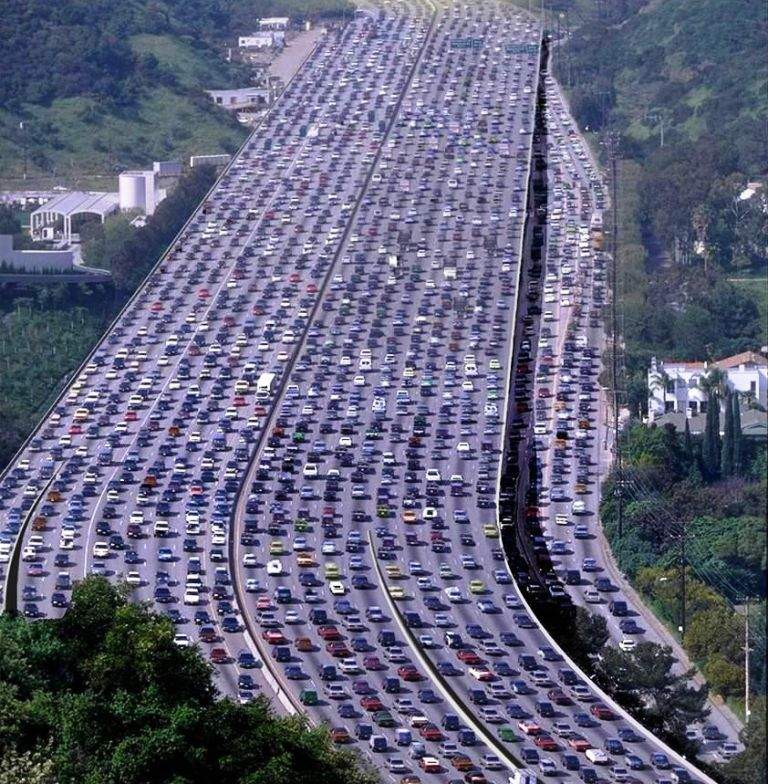It’s been an interesting week for transport policy, both nationally and locally. For a start the Government’s first Emission Reduction Plan was finally released on Monday, which personally was a bit underwhelming but at least makes some signals about further investment in cycleways and support for people buying e-bikes. This week there were also a City Council seminar providing some info about the coming update of the 2012 Christchurch Transport Strategic Plan, with the new Plan hearteningly focusing a lot on road safety and low-carbon transport systems. But are these all talk or will we see real action? At the time of the previous Chch transport plan, back in July 2012, the late Dirk de Lu (aka “Simon Barnard”) was musing on whether we can truly change our transport ways. Ten years on, with the development of further “new” plans to change to world, it’s hard not to be a little pessimistic again…

Back in the 1940’s urban planners found that building or expanding roading increased traffic congestion. This point was further reinforced in NY in 1973 when the West Side Highway collapsed and the predicted traffic chaos was instead a reduction in traffic. San Francisco found a similar result with the destruction of the Embarcadero freeway in the 1989 earthquake. The U.K. has found that removing downtown roads boosts the local economy.
What? How can congestion be relieved by not building roads, and increased by building them? The concept of ‘latent demand’ provides the answer. When people are habituated to using cars and have made the investment in them they want to drive. If traffic congestion gets bad enough they just may choose an alternate mode or route. If a new or expanded road is created they use it in hopes of getting that good feeling of going from ‘a’ to ‘b’, easily. “Build it and they will come.”
For generations traffic engineers, encouraged by the auto, petrol, road building industries, have been taught to think of more and bigger roading projects as the solution to congestion.
The current National government is a true believer and has committed NZ to spend $12-14 billion on their Roads of National Significance (RoNS) aka Roads of National Stupidity. This is about $6 billion more than they hope to raise from asset sales. For more on latent demand check out this excellent article.
You can also consult “Suburban Nation” by A Duany, E Plater-Zyberk and J Speck which provides this simple to understand quote from Carol Jouzatis:
“Trying to cure traffic congestion by adding more capacity is like trying to cure obesity by loosening your belt.”
In Christchurch Mother Nature has implemented a massive urban renewal programme. With much of the downtown leveled we have the opportunity to build a transport system for people. The Share an Idea process sought to consult broadly with the community for what they want. Cycling was the big winner in the transport category with over a thousand more comments supporting cycling than any other transport mode.
Even more hopefully the Christchurch City Council (CCC) has been updating and consolidating their transport planning and a soon to be released draft Christchurch Transport Plan (CTP) acknowledges and documents many of the real benefits to be achieved by delivering cycling and walking networks. Kudos to those involved. The draft plan was to be adopted at the 28 June 2012 CCC meeting, but we are told it was sent back to strengthen the cycling and walking elements. Still, you can get a copy here.
Spokes Canterbury has also provided notes on the cycling elements of the plan here. Watch this site for updates on the new draft CTP and how you can help.
Unfortunately the true believers, in the form of the National Government Policy Statement on Transport (GPS) have over ruled the community, good transport planning and a common sense response to rising petrol prices. In support of their RoNS local bodies are being forced to allocate their own transport spending for roads and infrastructure to support the RoNS. Even Local Government NZ has made submissions calling for more balanced road spending. Check out:
Local Government NZ has commented upon the GPS, arguing that higher priority local transport initiatives are being starved of funds due to the focus on RoN’s. For an even stronger response see their 2009-2010 comments.
CCC needs broad support from the community to commit additional funds to advancing walking and cycling infrastructure. Building an efficient active transport network is an obvious priority for getting people back into the downtown and through out Christchurch. They need to be encouraged to work with the cycling community to identify easy wins, low cost solutions and to prioritise the spending of those funds they make available.
What are the priorities? Do we really need to prioritise $13 million for new parking garages in a CBD which is full of vacant sections? Can we pare back the spending on a new stadium, or even get by on the one we have? Is $42 million for the full Town Hall rebuild more important than a liveable city where people of all ages and abilities can cycle safely? It is up to all of us who cycle, or would like to, to remind CCC to do what is required and needed.
Let’s build good active transport infrastructure because, no doubt, they will come.
(picture source)

https://www.theguardian.com/lifeandstyle/video/2022/may/17/why-new-bike-lanes-dont-cause-traffic-jams-video
Dirk would have approved of this link. RIP
Ten years on from Dirk’s post and the city council is still struggling to fix the problems caused by the “Roads of national stupidity”. They ran a street meeting between residents and staff in our street on Monday this week which was distinctly lacking in solutions to the increased traffic from the Northern Corridor. Still spending money on mitigation which could have gone on cycleways.